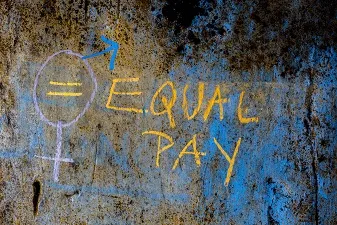Equal Pay Day

The Gender Pay Gap Still Exists.
Analyzing the most recent Census Bureau data from 2018, women of all races earned, on average, just 82 cents for every $1 earned by men of all races. This calculation is the ratio of median annual earnings for women working full time, year round to those of their male counterparts. It translates to a gender wage gap of 18 cents. The gender pay gap widens even more for full-time, working women with a bachelor’s degree and higher, only earn 75% percent of what their male counterparts do. Even though paying people differently based on their gender, race, religion, or national origin is illegal; the gender pay gap still exists today. Experience, seniority, and education often justify this gap and enable employers to avoid litigation for pay inequality.
Industries with the Largest Pay Gap:
Some industries are more susceptible to the pay gap than others. Women who work in law and medical sciences, financial managers, housekeeping and janitorial supervisors, and credit counselors and loan officers tend to get paid less than men. Even with the same education and experience. On the contrary, women who are producers and directors, office and administrative support workers, bus drivers, retail buyers, and fast food workers usually experience smaller pay gaps.
How to Reduce the Gender Pay Gap:
Fortunately, there are some steps that can reduce the pay gap creating more equality for women and men. Here are a few examples:
- National Paid and Family Medical Leave Program: Since women typically take on caregiving responsibilities, they are often denied job opportunities. They may also receive a lower pay rate than men. A national paid and family medical leave program may alleviate the gender pay gap.
- Labor Division: It’s not uncommon for some women to handle childcare and household responsibilities more than their partners. A labor division often prevents them from excelling in their careers or accepting promotions and pay raises. Improving the division of labor among couples can help.
- Pay Transparency: Unfortunately, women may not know they are earning less than their male counterparts. Pay transparency can resolve this issue and motivate more women to research the company and position before accepting a job offer.
- Minimum Wage Increase: Many women work minimum wage jobs. Even by just a few dollars, raising the minimum wage may improve the pay gap and their financial situations.
Consult your Financial Professional.
If you’re a woman who is struggling financially, working with a financial professional can help, regardless if you’ve been affected by the pay gap or not.
SWG 1558093-0321c
